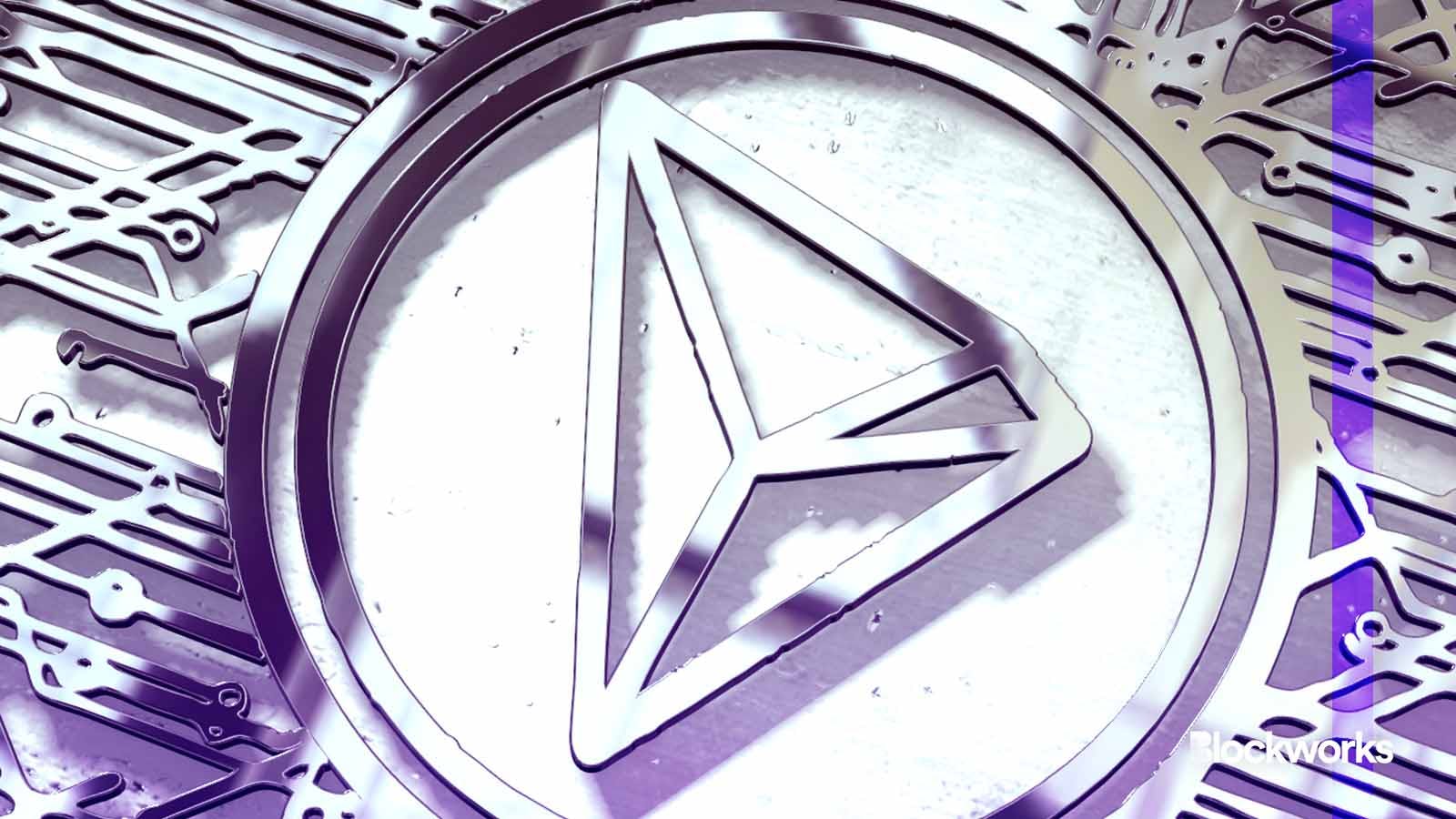Stop calling dogecoin a memecoin — those are actually popular
Memecoins have heated up alongside the rest of the crypto markets, but the same can’t be said for dogecoin and shiba inu

Immersion Imagery/Shutterstock modified by Blockworks
Dogecoin has fallen out of the top 10 cryptocurrencies by market cap for the first time in more than a year, even as buzz surrounds newer memecoins.
The original memecoin was flipped by tron (TRX) this week, the layer-1 blockchain spearheaded by polarizing crypto personality Justin Sun.
TRX has stayed on a consistent uptrend since markets bottomed around the FTX debacle in November 2022. Its price has nearly tripled since, boosting its market cap from $5 billion to $12.2 billion.
Dogecoin is now hovering around $12 billion but its token price has only gained 10% across the same period. Bitcoin’s price has tripled and despite a brief spike in dogecoin’s bitcoin ratio directly around FTX’s bankruptcy, DOGE’s cost basis in BTC has collapsed by more than 60%.
Read more: Musk lawyers say ‘nothing wrong’ with memes in $258B Dogecoin lawsuit
TRX has also seen its bitcoin ratio slide by about one-fifth, but its uptrend in terms of US dollars perhaps reflects a market seeking alternatives to Solana on account of its association with Sam Bankman-Fried.
Polygon (MATIC) saw a similar price rally in the months directly after FTX went bust but later gave up most of those gains.
Sun has also worked to boost his network’s perception as a hotbed for DeFi activity. Tron-native stablecoin USDD and lending platform JustLend have helped double Tron’s total value locked (TVL) since Bankman-Fried’s arrest, now at close to $9 billion, second only to Ethereum’s $46 billion.
Read more: Dog coins are back: BONK leads Dogecoin, Floki and Shiba with 1400% rally
TRX aside, there’s an argument to be made that dogecoin no longer fits into the “memecoin” category, which is otherwise dominated by tokens like bonk (BONK), pepe (PEPE), dogwifhat (WIF) and dogelon mars (ELON).
The value of those tokens is mostly backed by the attention span of their individual communities, although in BONK’s case, its team has made a point to partner with popular DeFi apps, boosting its utility beyond the social layer.
Dogecoin, launched in 2013, is meanwhile a fork of a now-defunct project LuckyCoin, itself a fork of Litecoin, which forked Bitcoin’s codebase to go live in 2011 — making Dogecoin a fork of a fork of a fork of Bitcoin.
What bitcoin (BTC) the currency is to the Bitcoin network is what dogecoin is to Dogecoin: Miners use electricity to mine DOGE in much the same way as BTC, although with slightly different rigs.
Dogecoin users must pay miners DOGE for the right to use the network, which by all accounts is practically censorship-resistant to the same degree as Bitcoin or Ethereum.
Read more: Dogecoin proves it’s a serious blockchain, flips Ethereum transaction count
Even Dogecoin copy-cat (copy-dog?) Shiba Inu — by far the second-largest memecoin behind Dogecoin — eventually launched its own blockchain.
SHIB was initially issued on Binance Smart Chain as a BSC-20 memecoin in August 2020, adopting its predecessor’s canine mascot as its name. The Shiba Inu team deployed an Ethereum layer-2 network, Shibarium, three years later built by forking Polygon’s codebase.
Like sands through the hourglass, so are the memes on our coins
Tracking the exact size of the memecoin market is tough, considering how many are made every year (CoinMarketCap now lists almost 1,700, including dogecoin and shiba inu, up from 345 one year ago).
Taking memecoins currently with caps over $40 million (as well as a few old school examples no longer that large) and comparing them to the size of the overall crypto market, we can see they maxed out at about 3.8% dominance during the last bull market in May 2021.
Since that peak, dogecoin and shiba inu have together gone from making up almost all of the memecoin market (going by market caps alone) to 82% today.
This has dragged down memecoins’ market dominance by two-thirds, now at just over 1%. TRX currently makes up about two-thirds of a percent of the crypto market.
So, it makes some degree of sense to separate dogecoin and shiba inu from the category. Doing so shows their growth has actually decoupled from all the other memecoins.
DOGE and SHIB’s dominance slipped throughout the middle of last year while the rest of the segment plodded along with bitcoin and ether.
The collective dominance of the memecoins on the chart above doubled, from 0.1% to 0.2%, between September and today, now altogether valued at about $4 billion (although their actual value would likely be far less if they were sold).
Crypto’s total market cap gained 85% in that period, swelling from just over $1 trillion to nearly $2 trillion.
Different memecoins spurred growth at different times: Elon Musk-themed memecoins baby doge coin (BABYDOGE) and ELON went gangbusters when the maverick billionaire was tweeting about Dogecoin every other day back in 2021.
Read more: Hey, Elon, forget about Disney. Save X by launching your own crypto.
Musk coins have since given way to newer fan favorites in PEPE, BONK and corgiAI (CORGIAI).
Whether those stick around any longer, nobody knows, but at least for now, the market seems content treating them differently than the older dogs.
Get the news in your inbox. Explore Blockworks newsletters:
- The Breakdown: Decoding crypto and the markets. Daily.
- 0xResearch: Alpha in your inbox. Think like an analyst.






